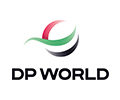European naphtha to see support on LPG shortage, increased blending demand

The European naphtha complex is set to see increased tightness as short supply of alternative feedstock LPG in Europe, coupled with robust downstream petrochemicals demand, leaves the latter with little alternatives but to increase naphtha utilization rates.
Specifically, over the summer propane commonly sees a drop in demand for heating purposes, therefore putting pressure on flat prices that in turn sets it as the preferred feedstock for cracking purposes against naphtha on favorable pricing.
But low domestic refinery runs and also limited LPG arbitrage from the US with substantial volumes heading towards Asian markets instead, have contributed to the propane against naphtha price differentials narrow outside seasonal norms.
Specifically, the front-month NWE propane swap contract against the equivalent naphtha contract averaged a $69.54/mt discount over June, while the discount narrowed 32.4% week on week, closing on July 1 at $38/mt, its highest since Feb 26. Comparatively, the average discount for June 2019 stood at $132.74/mt and for June 2018 at $111.71/mt. European petrochemicals producers often increase naphtha utilization rates against propane at a discount narrower than $40-$60/mt, which historically is noticeable over winter months.
“It is all propane driven,” a source said.
Despite OPEC+ not deciding July 1 on a production increase levels for August, the market had priced in an expected rise and remained bullish as demand was anticipated even higher. OPEC+ likely sought price stability, while one of the key factors was US shale production levels not expected to substantially increase in the near term. However, shale production apart from crude oil is one of the key sources of LPG, which could further support prices on tight supply.
European petrochemicals producers saw demand tightness in downstream ethylene and propylene markets, in turn increasing feedstock buying, particularly of naphtha.
Specifically, the European industry propylene contract price has settled at $1,320/mt for July, up $60/mt from June, market sources said June 30. In line with this, the industry-settled European ethylene contract price for July was fully agreed upon June 30 at $1,328/mt FD NWE, up $47/mt from June.
The ethylene settlement was the highest price since November 2018, with values on a consistent uptrend since December 2020.
Levels of cracking margins, although declining, remained competitive in Europe compared with other regions. The Northwest Europe spot cracker margin averaged $781.50/mt in June, in line with the pre-pandemic average $788.02/mt in June 2019. The uncommon trend for the season remains, however, with high naphtha participation rates in the cracking pool for the summer season.
An estimated 416,000 mt LPG arrived to Europe from US in June, substantially lower comparing to 633,000 mt May total volumes, Kpler intelligence firm data showed. This also was the lowest monthly total since January, when the naphtha crack spread had last turned positive, largely driven by petrochemicals demand. Some 96,000 mt LPG are so far expected to arrive to Europe over July.
Crackers restarts, and more favorable arbitrage economics, had in turn attracted LPG volumes to Asia, with the total for June standing at 1.937 million mt, lower still from 2.260 million mt in May.
Gasoline blending demand to increase
Naphtha also sees support for blendstock grades due to increasing gasoline consumption domestically but also exports to other regions such as West Africa and the US.
“With no LPG from the US, strong gasoline demand in the US and good petchems margins in Europe, we really need something big to happen to change things around,” another source said.
Despite blending demand not yet reaching pre-pandemic levels, it is anticipated to strengthen as it helps absorbing heavier naphtha grades, usually utilized for reformate production. The greater supply of heavy naphtha grades is due to sluggish demand increase for jet fuel on restrictions associated with air travel, which incentivizes refiners to maximize naphtha yields against jet fuel.
Naphtha maximization against jet fuel will likely remain in place the following months on demand expectations and price differentials, particularly as currently refining margins are supported substantially by the light distillates complex at the expense of middle distillates.
Jet CIF NWE cargo against the equivalent naphtha closed at a $47/mt discount on July 1, the widest discount seen since Oct. 13, 2020.
This uncommon combination of bullish factors has contributed to substantial strength in the European naphtha complex, particularly in terms of crack spread.
Specifically, naphtha CIF NWE front-month crack spread averaged minus $2.50/b over June, increasing 30.3% week on week to close at minus $1.22/b on July 1, the highest since March 3. This level even marginally surpassed the June 2020 average of minus $2.64/b, when naphtha saw unusually high support, while the respective average in June 2019 stood at minus $9/b.
Source: Platts

 Hellenic Shipping News Worldwide Hellenic Shipping News Worldwide, Online Daily Newspaper on Hellenic and International Shipping
Hellenic Shipping News Worldwide Hellenic Shipping News Worldwide, Online Daily Newspaper on Hellenic and International Shipping























 PG-Software
PG-Software